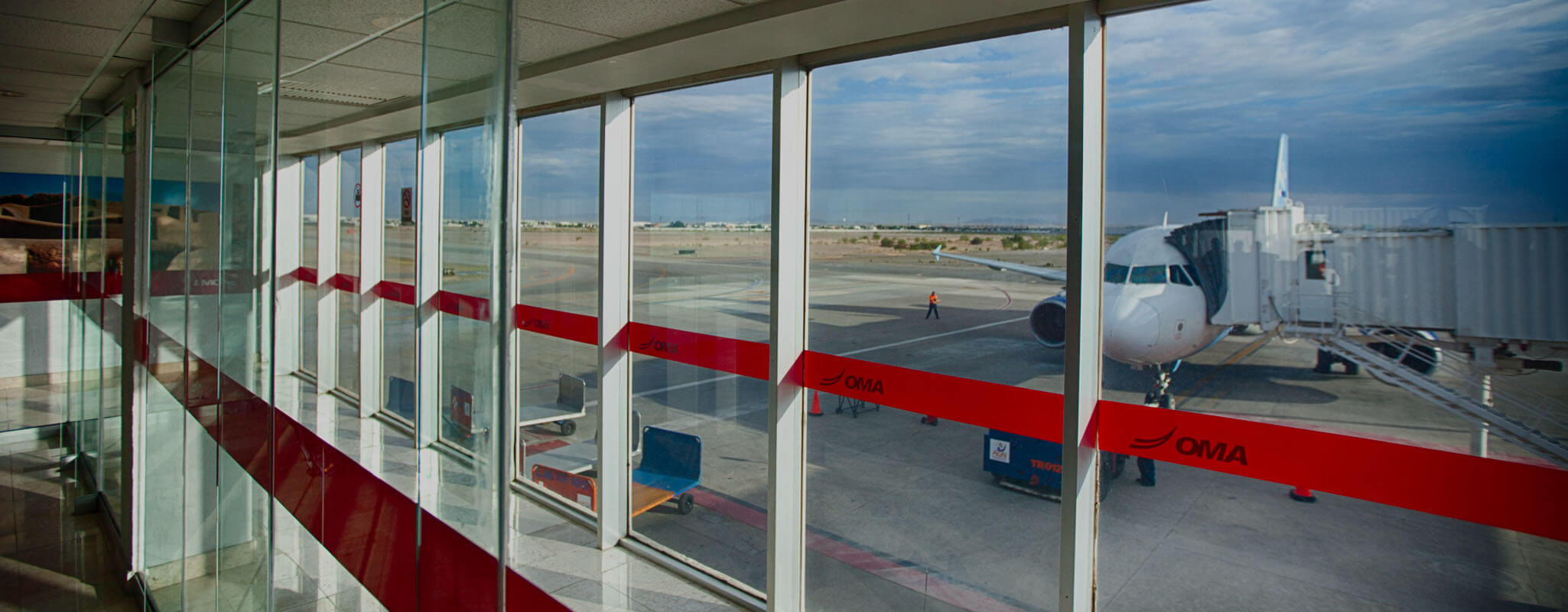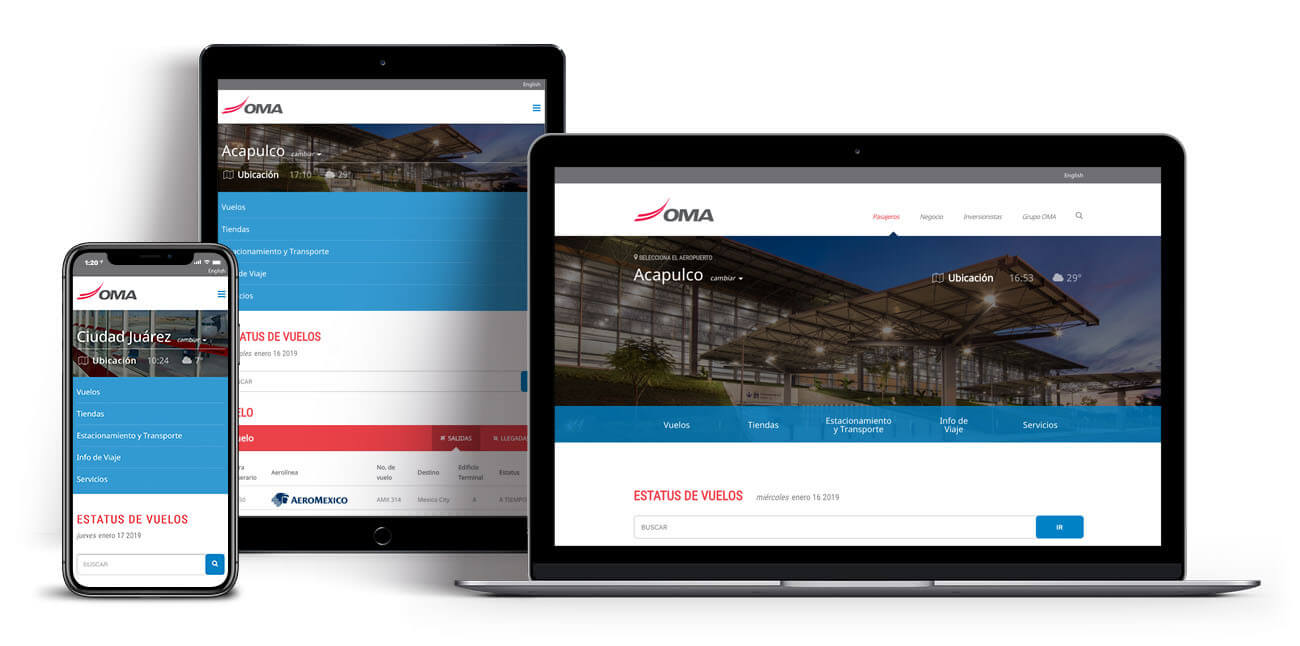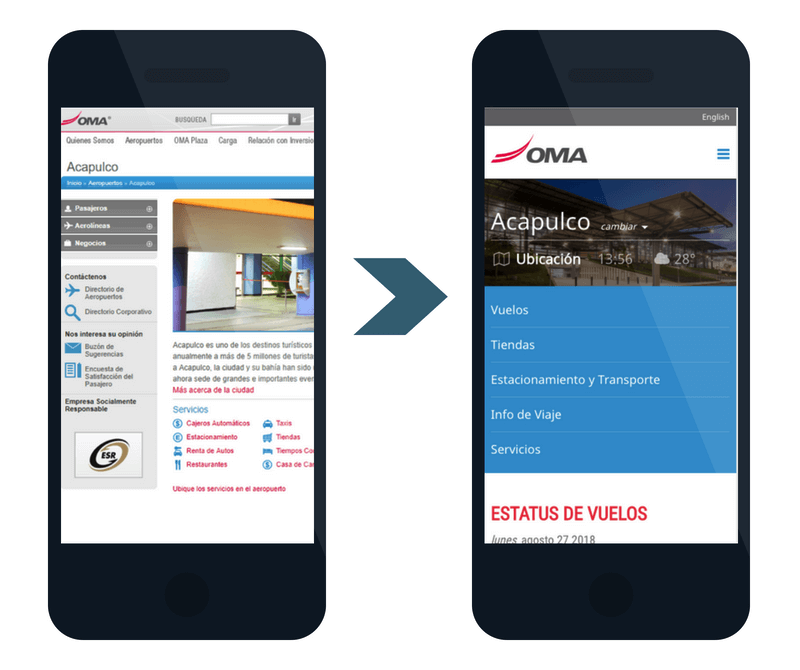
Website Redesign for Airport Group Serving Over 19M Passengers
Project Summary
PINT helped OMA replace its nine-year-old website with a brand new site that launches OMA into the modern era of web development.
To kick off the website redesign, PINT conducted a meticulous Discovery to learn more about existing pain-points, user experience needs, business goals, etc. All of this data was used to intelligently construct a new site architecture to serve the needs of end-users, coupled with a new CMS platform to facilitate the work of OMA employees.
Client Overview
OMA operates and manages 13 airports in the central and northern regions of Mexico. OMA serves over 19.7 million passengers and employs over 1,000 people.
Client: Grupo Aeroportuario Centro Norte, S.A.B. de C.V. (OMA)
Location: San Pedro Garza Garcia, N.L., México.
Industry: Airport Services
PINT Services: UX/UI, Information architecture, design, front-end development, quality assurance, marketing
Technology: PWP 5

Challenge
OMA’s previous site was several years old when it sought out a website redesign. Given the age of the site, OMA knew it was not sufficiently meeting the informational needs of its users and was not accurately portraying and promoting its brand image.
If that were not enough reason to undergo a site redesign, the technology of its old website was also rapidly deteriorating. Critical portions of OMA’s website, including the sub-navigation bar and homepage banners, were enabled by Flash, which has been phased out of popular browser types.
Solution
PINT assisted OMA with a complete overhaul of its website, including a CMS upgrade, new content (in both Spanish and English), site restructure, visual design to accommodate its new branding, and final development and testing.

Discovery
PINT conducted a thorough Discovery before formalizing the redesign strategy. The Discovery consisted of user surveys, stakeholder interviews, affinity mapping, analytics research, industry benchmarking, and more.
To initiate Discovery, PINT identified oma.aero’s target audiences:
- Passengers
- Business Partners
- Investors
- Media
- Job Seekers
- Airlines
- Employees
PINT collected over 700 responses from a user survey, distributed via OMA’s website, a newsletter campaign, and social media. With this data, PINT was able to discern critical information about user intent and their ability to complete tasks they came to the site to do.

From these surveys, it was apparent that users (predominantly passengers) primarily visited oma.aero for flight status and airport services information.
Of the users who are seeking airport services information at the start of their trip, approximately 68% of these users reported that they are usually able to find the information they need. A remaining 30% partly found the information they needed. Two percent did not find the information they needed.

With 32% of this primary user group unable to achieve their goal, it was important that the redesigned website prioritize content on airport services. During the redesign process, PINT worked with OMA to ensure this content was both available and easily accessible.
Additionally, PINT conducted interviews and focus groups with OMA stakeholders (including OMA’s CEO, CCO, CFO, etc.) and CMS end-users (i.e. OMA employees who maintain the website).
These interviews allowed PINT to gather insight on OMA’s vision and branding, as well as the pain points of those who work closely with the website.
Implementation
With the new site rollout, oma.aero was launched into the modern era of web development.
OMA’s new site has tons of contemporary features including geolocation, flight status feeds, and newsletter enrollment.
PINT implemented new technologies, such as a search mechanism. During development, PINT implemented a 3rd party tool, Algolia, which features several out-of-the-box elements such as typo-tolerance, multiple languages, and synonym search.
PINT also assisted in organizing the content gathering effort, and even did a portion of the content writing, in both English and Spanish.
By reorganizing the site structure, cutting out superfluous content and joining separate content into shared areas, PINT working along with OMA, were able to reduce the size of the new site by about 1,500 pages. From reducing the size of the OMA website, we expect to see improvements in passengers being able to find the information they seek.

Also in efforts to support these user needs, the new website is completely mobile responsive (which, of course, was not necessarily viewed as a compulsory requirement back in 2009).
Results
Without doubt, OMA’s redesigned website has positively impacted the experiences of both end users and CMS platform users. The trimmed-down and restructured site, with powerful search and geolocation tools, drives users to the content they seek.
Since the rollout of the redesigned website, oma.aero has seen several quantitative gains.
Average session duration for mobile users has increased by over a minute. Additionally, the bounce rate has decreased from 76.9% to 42.5%, and pages per session have increased from 1.6 to 3.3 pages per session.
Moving forward, PINT would like to gather more data by running an identical user survey (referenced at the beginning of this post) to gauge how responses may have changed since the new site launch. In the interest of iterative improvement, these data sources can provide insights for continued website updates to even more effectively engage with and meet the needs of all user groups.
If your site’s user experience could use an overhaul, let us know by filling out the form below.